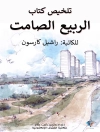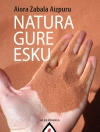In ‘Folklore of Scottish Lochs and Springs, ‘ James M. Mackinlay delves into the rich tapestry of Scottish water folklore, weaving together myth, legend, and local traditions surrounding lochs and springs. This meticulously researched work combines ethnographic insights with vivid storytelling, engaging the reader in a journey through the spiritual and cultural significance of these water bodies in Scottish heritage. Mackinlay’s lyrical prose captures the essence of the landscapes, while his systematic approach reflects the growing interest in folklore studies during the late 19th century, a period that sought to document and preserve cultural histories amid rapid modernization. James M. Mackinlay was a noted folklorist and scholar with deep roots in Scottish culture, which undoubtedly shaped his passion for exploring the nation’s mystical narratives. His scholarly pursuits align with the broader Romantic movement’s fascination with nature and the supernatural, providing him the impetus to illuminate the connections between Scotland’s natural features and its vibrant folkloric traditions. Through his deep understanding of local customs, Mackinlay enriches the cultural context of each waterway, offering insights into their significance in Scottish identity. This book is a testament to the enduring power of folklore and its ability to connect generations. I highly recommend ‘Folklore of Scottish Lochs and Springs’ to readers interested in folklore, mythology, and the intricate ways in which nature and culture intertwine, as it provides both a scholarly resource and an engaging narrative that illuminates the heart of Scotland’s landscape.
เกี่ยวกับผู้แต่ง
James M. Mackinlay, an insightful scholar with a profound interest in Scottish folklore, made significant contributions to the field through his seminal work, ‘Folklore of Scottish Lochs and Springs’ (1893). While the precise dates of his birth and death remain elusive in historical records, Mackinlay’s reputation is solidified by his meticulous exploration of the myths, customs, and traditions surrounding Scotland’s abundant natural water features. His book is not merely a collection of tales; it is a comprehensive study, exploring the intertwining of paganism, Christianity, and local superstitions in the context of the natural environment of Scotland. Mackinlay’s academic style is reflective of the late 19th-century Scottish intellectual milieu, marked by a methodical approach to folklore studies. He skillfully weaves anthropology, history, and etymology into his analyses, providing rich texture to the understanding of Scottish cultural heritage. Though ‘Folklore of Scottish Lochs and Springs’ remains his most acclaimed work, it is a testament to his passion and dedication to preserving the storied legacy of Scotland’s lochs and springs. Mackinlay’s literary style, with its engaging narrative and scholarly dedication, continues to be a valued source for folklorists, historians, and enthusiasts of Scottish tradition.












